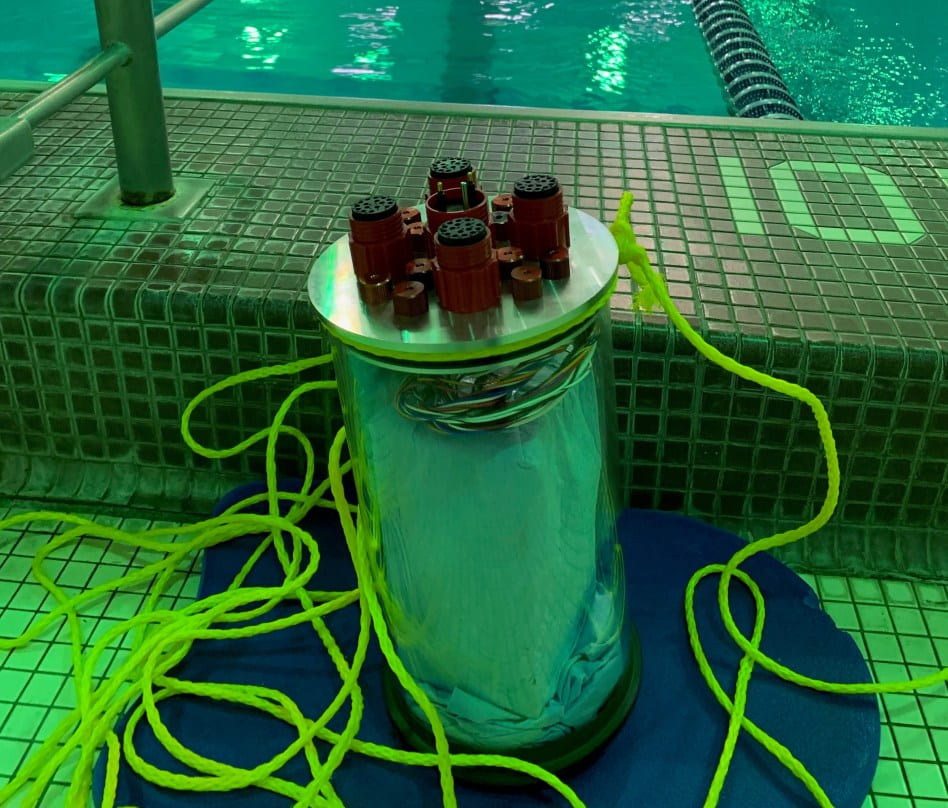Wentworth’s ROV team spends a lot of time at the pool, but it’s all in the name of engineering.
Last June, a group of 12 students in the university’s chapter of the Institute for Electrical and Electronics Engineers took a custom-built submersible Remotely Operated Vehicle (ROV) to Seattle for competition in the Marine Advanced Technology Education International ROV Competition. This cross-country trip marked only the third time that Wentworth qualified for the prestigious meet.
The group was charged with creating technology to locate and identify aircraft wreckage on the ocean floor, the same approach that was recently used to find the long-lost U.S.S. Wasp, a World War II aircraft carrier that sunk in 1942.
This June, an updated Wentworth team (some new faces, some familiar) is heading to the pools of Tennessee to once again compete, but this time with a new ROV, anodized in a shiny black for anti-corrosion protection. The team has been designing, prototyping, manufacturing, wiring, and programing for roughly six months, challenged with creating a vehicle
that can operate in the freshwater environments of the Volunteer State, utilizing an AC/DC power supply that connects to a common wall outlet. The team has created a ROV that is capable of the following problem-solving abilities:
- Inspect and make repairs to a hydroelectric dam
- Monitor water quality, determine habitat diversity, and restore fish habitat
- Recover a Civil War era cannon and mark the location of unexploded cannon shells
The cost of creating such a robot, in addition to traveling to the competition, runs roughly $21,000. The team—along with faculty adviser Aaron Carpenter—has spent much of this year fundraising in between the regular demands of classes and co-ops.
Team member Ben October cited the ROV project as a key example of the creativity at the university. “When I came to Wentworth, I was blown away by the things people invent and build here,” he says.
—Greg Abazorius


